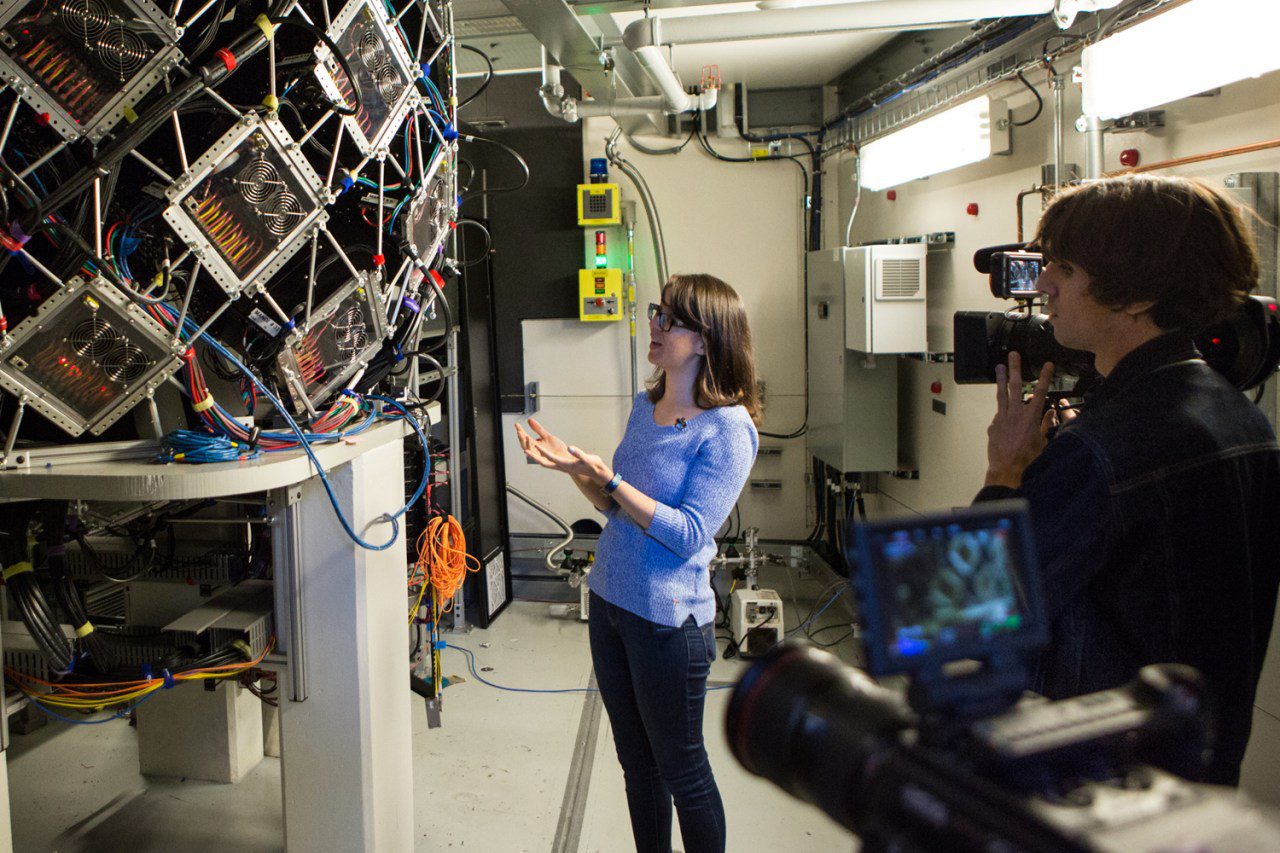Former NOVA Executive Producer to Spend a Week Mentoring Students at UT

Sixteen students in a documentary production class at the University of Tennessee, Knoxville, have spent much of the fall semester at Oak Ridge National Laboratory doing interviews and filming to make a 30-minute documentary about the Spallation Neutron Source.
Now the students—14 undergraduates and two graduate students—are getting an extraordinary opportunity: they will work alongside longtime NOVA executive producer and award-winning science journalist Paula Apsell, who arrives at UT Monday, October 28, for a weeklong distinguished lecturer residency.
As part of her visit, Apsell will deliver a free public lecture, “The Art of Science Communication,” at 7:30 p.m. Tuesday, October 29, in the Patrick Auditorium, 321 Communications Building. Her talk will be illustrated by clips from her Nova programs.
Apsell visit sparks idea
“When I learned that Paula Apsell would be in residence in the college, I thought we should find a way to use her science documentary-making expertise in on-on-one interactions with our students,” said Associate Professor Nick Geidner, who teaches the documentary production class in the School of Journalism and Electronic Media (JEM) in UT’s College of Communication and Information. Geidner also directs Land Grant Films, a JEM organization that gives UT students experience in documentary storytelling while providing local nonprofit organizations with videos that can be used to raise awareness and funds.
JEM Professor Mark Littmann arranged Apsell’s residency. Fifteen years ago, Littmann brought Apsell to UT to present the annual Alfred and Julia Hill Lecture.
Apsell—considered one of the world’s most influential science journalists—recently retired as executive producer at Boston’s WGBH, concluding 34 years at NOVA.
After Geidner and Littmann considered projects students could do with Apsell, Geidner reached out to ORNL Communications Director David Keim, who was eager to help.
“UT does a great job in preparing students to become professional science communicators, so of course I was glad to meet and hear what they had in mind,” Keim said. “When they explained their plan, I recommended this particular topic because scientists at ORNL pioneered the use of neutrons for materials research, and the Spallation Neutron Source today is one of the premier scientific facilities in the world. Plus we’re embarking on a major expansion that will allow us to do entirely new types of research. It’s a topic that will be of interest not just here in Tennessee but around the world.”
Geidner said the students’ film will be shown locally, used by ORNL for educational purposes, and hopefully be picked up for wider distribution.
Cram course in neutron science
Jeremy Rumsey, who writes about neutron sciences at ORNL, said he and Keim began meeting with students over the summer to bring them up to speed on the science.
“We explained how neutron scattering is used to understand energy and materials at the atomic scale,” he said. “Understanding how atoms are arranged and how they behave is critical to improving technology.
“We basically bombarded the students with information, providing them with a ton of research examples covering a wide range of experiments from cell membranes to gas-powered engines to super bizarre quantum mechanical phenomena. Pretty much everything around us can be better understood in some way using neutron scattering.
“The students have been fantastic,” Rumsey said. “This is an incredibly ambitious project that requires them to unpack some of the most hard-core concepts in physics, biology, chemistry, and engineering, while also traveling back to the 1940s and into the future to cram about 100 years of science into less than 30 minutes. I’m rather impressed with how well they’ve been able to absorb and organize the information.
“It’s exciting to see them excited about what we do at Oak Ridge.”
For Rumsey, a Journalism and Electronic Media alumnus, the project has also been a gratifying way to give back.
“My UT education really prepared me for my career. Now I’ve come full circle and I’m honored to help these students go forward to make their own contributions.”
Students reap the benefits
Christy White, of Oak Ridge, a senior in journalism and electronic media, is the lead student producer of the Spallation Neutron Source documentary.
“Script supervision, shooting schedules, ORNL access permissions, shot feedback, and crew readiness are just a few of my responsibilities,” she said. “I’m looking forward to getting Paula Apsell’s feedback on the script and learning the best ways to proceed. Also, as a woman in documentary and filmmaking in general, I plan to ask her about the benefits vs. risks of pursuing this career. How do you pursue such a career and also have a family? Is it something I can do from Tennessee?”
Jonathan Braun, a JEM graduate student from Knoxville, is the project’s student director—in charge of everything visual, from the lighting to camera angles. His crew has been doing on-camera interviews with scientists and filming the Spallation Neutron Source at work.
Interested in science communication and documentary filmmaking, Braun said he signed up for the class because it offered hands-on experience.
“Getting some real-world experience by directing a project of this magnitude is fantastic, and I’m honored to work with such a great group of people,” he said. “Having a dialogue with an esteemed professional from the industry like Paula Apsell is a huge opportunity. I hope to learn what I have done right so far as a director and, more importantly, what I can do to improve.”